The Broke Backpacker is supported by you. Clicking through our links may earn us a small affiliate commission, and that's what allows us to keep producing free content 🙂 Learn more.
Since 2014, Italy has earned the coveted number-one spot as the world’s largest wine producer, ahead of both Spain and France. The country produced a whopping 50 million hectoliters in 2022, with predictions of around 43 million hectoliters in 2023. That’s A LOT of wine!
With so much wine, there needs to be a demand to match supply… Luckily, the Italians love their vino!
Think long, lazy, lunches prepared by Nonna, washed down with some crisp Vermentino. Or a nice hearty beef ragout dish that is accompanied by an equally as hearty Chianti. Are you salivating just as much as I am right now?
Now, let’s bring it back – to find the best winery tours in Italy that money can buy. Wine tourism is an ever-growing concept, and what’s better than the combination of wine and travel?
I’ve done the hard yards and sifted out the best vineyard tours to provide you with firsthand experience as a result – you’re welcome! These tours are run by knowledgeable locals who are proud of their heritage and will guide you through the wines and the region at hand.
So, let’s not delay: the very best winery tours in Italy await!
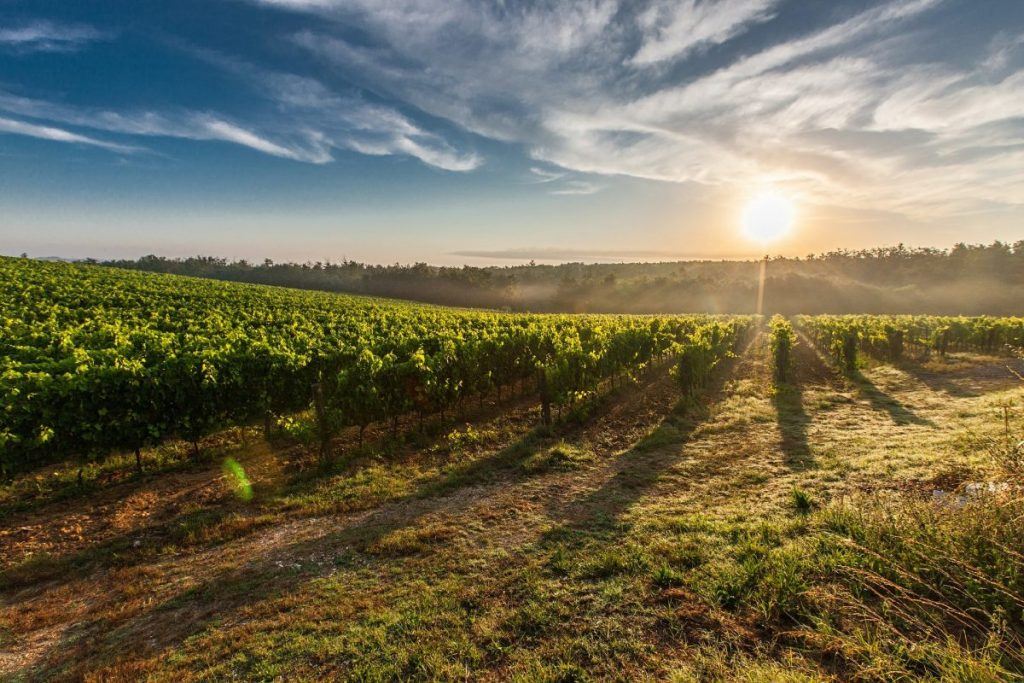
The Broke Backpacker is supported by you. Clicking through our links may earn us a small affiliate commission, and that's what allows us to keep producing free content 🙂 Learn more.
What is a Vineyard Tour?
Now, it is important to establish what exactly a vineyard tour in Italy is before we get started. We don’t want any confusion going forward. No, you’re not only going to go for a walk around the vineyards.
You’re going to be driven through wine country from a major town or city, tour the cellar, and learn about the production methods and the wine ageing.
On a vineyard tour, you get to meet the winemakers, trot through the vineyards, and meet the real unsung heroes of wine production: the vines. At the end of the day, you crash into your comfy hotel bed.

Oh, but I forgot to mention the best part about travelling in Italy: to taste amazing regional wines! You will get to sample the goods from each cellar… And if you’re really lucky, you might even get to taste some sneaky treats out of a tank or barrel.
These winery tours are also a great way to bring the travelling wine lovers to the vineyards and get them drinking their wines. It’s one thing making all that wine but it’s another thing selling it! I like to think of it as a very much mutually beneficial arrangement for the winemakers and consumers.
I need to briefly mention designation in Italy before we continue – DOC and DOCG. DOC Denominazione di Origine Controllata and DOCG is Denominazione di Origine Controllata e Garantita, which is the highest designation for Italian wines. Before we get down to the best winery tours in Italy, we need to look at the wine regions.

Our GREATEST Travel Secrets…
Pop your email here & get the original Broke Backpacker Bible for FREE.
Wine Regions of Italy
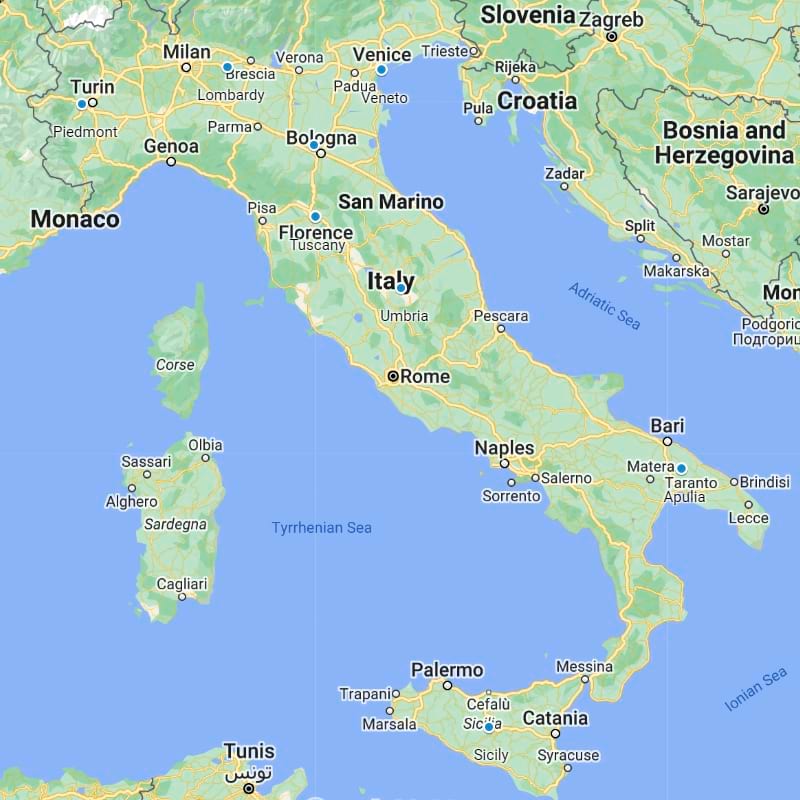
Italy is blessed with a HUGE variety of wine regions, wine styles, grape varietals, and of course, climatic and topographical conditions. There is a long history of wine production in the country that dates back almost 4,000 years. So it’s safe to say, that they know what they’re doing!
With such a diversity in climate and topography, there is also a huge diversity in the wines that are produced in each region. If you look at the wine map of Italy, almost the entire country is covered with vineyards so you can rest assured that there is a vineyard close to where you’re going to stay.
Whether it’s the world-famous Barolo and Barbaresco from north-west Piedmont, the classic Chianti from Tuscany, or the sparkling Prosecco from Veneto, the quality is second to none.
Let’s take a closer look at each wine region in Italy and what makes each so special.
Sicily
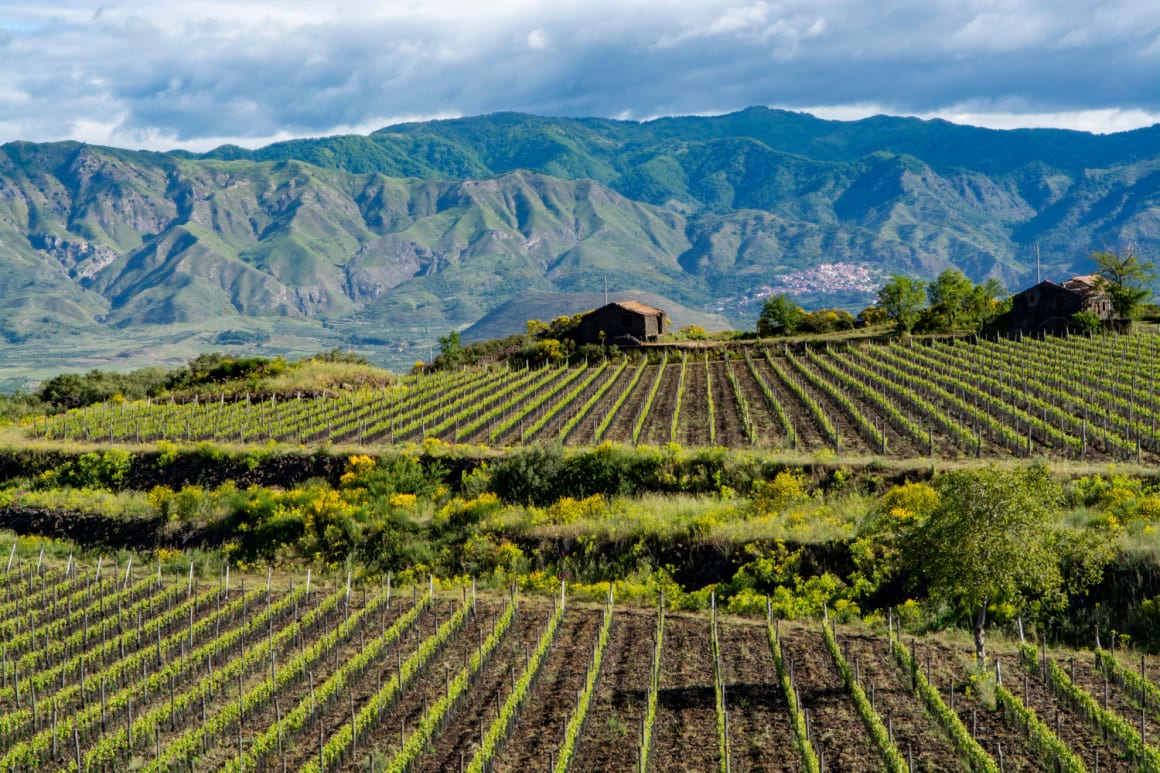
First up, we travel to the southernmost wine region of Italy – the beautiful island of Sicily. Sicily is the largest island in the Mediterranean Sea and has a wine-making history that dates back almost 2,500 years.
The island benefits from a Mediterranean climate with lots of sunshine, moderate rain, and cooling ocean breezes. All these factors make it the perfect climate for growing grapes and there is also very little disease, mildew, and rot present.
People stay in Sicily for rather dramatic volcanic landscapes and mountains like Mount Etna, which have a rather significant impact on the soils and growing conditions. The dark, mineral-rich soils together with the vineyards planted on mountain slopes yield favorable results.
Grape varieties planted on the island are a combination of native varieties such as Catarratto and Nero d’Avola as well as Inzolia and Grillo for Marsala production. Other varietals include Alicante (Grenache), Perricone, Grecanico, Nocera, and Frappato.
Tuscany
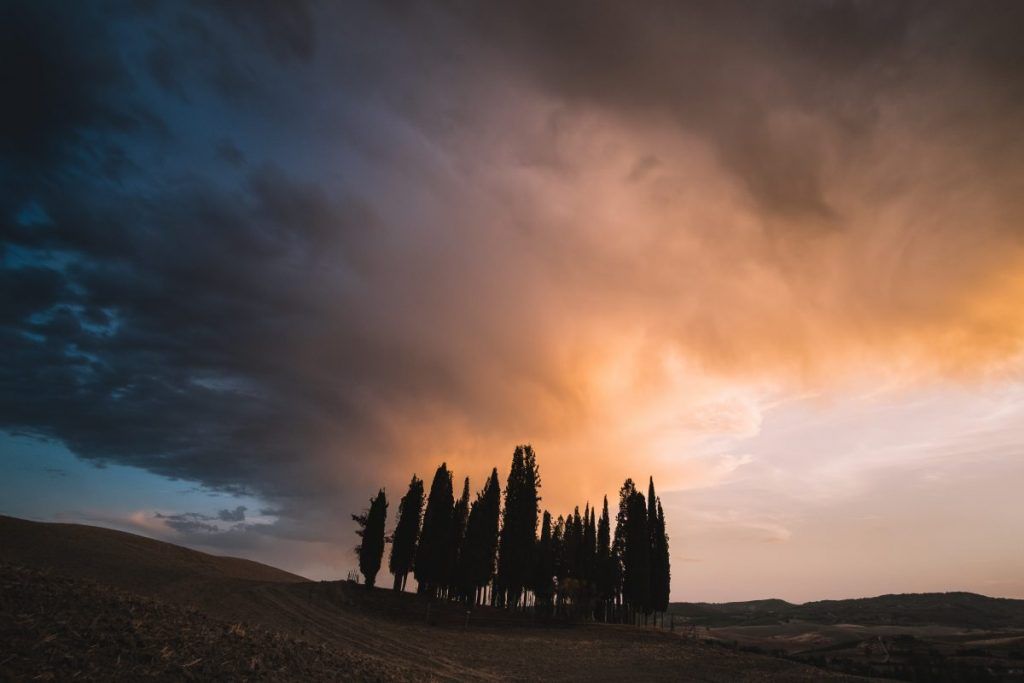
Photo: Ralph Cope
Tuscany is regarded as one of the top three wine regions in Italy based on its DOC production. With a long history of wine production and accounting for almost 17% of DOC production, Tuscany is a big deal in Italian wine production.
Located in the west-central area of the country, it is also a huge tourist destination, with tourists flocking to Florence and of course, Pisa to see the Leaning Tower. In terms of wine tourism, Tuscany is famous for its Sangiovese-based red wines from Chianti and straw wines called Vin Santo.
The coastal areas are blessed with cool ocean breezes while inland areas are exposed to hot days and cool nights. The winters can get cold and there’s even snowfall during the winter which allows the vineyards to experience proper dormancy.
Sangiovese makes up almost two-thirds of all vineyard plantings and around 85% of red wine production. It’s easy to see why the region is known for their Sangiovese-driven wines. Super Tuscans are another well-known wine from Tuscany that blends Cabernet Sauvignon and Merlot together with Sangiovese.
Trebbiano (Ugni Blanc in France) is the most widely planted white varietal in Tuscany, as well as portions of Vermentino, Vernaccia, and Malvasia.
Piedmont
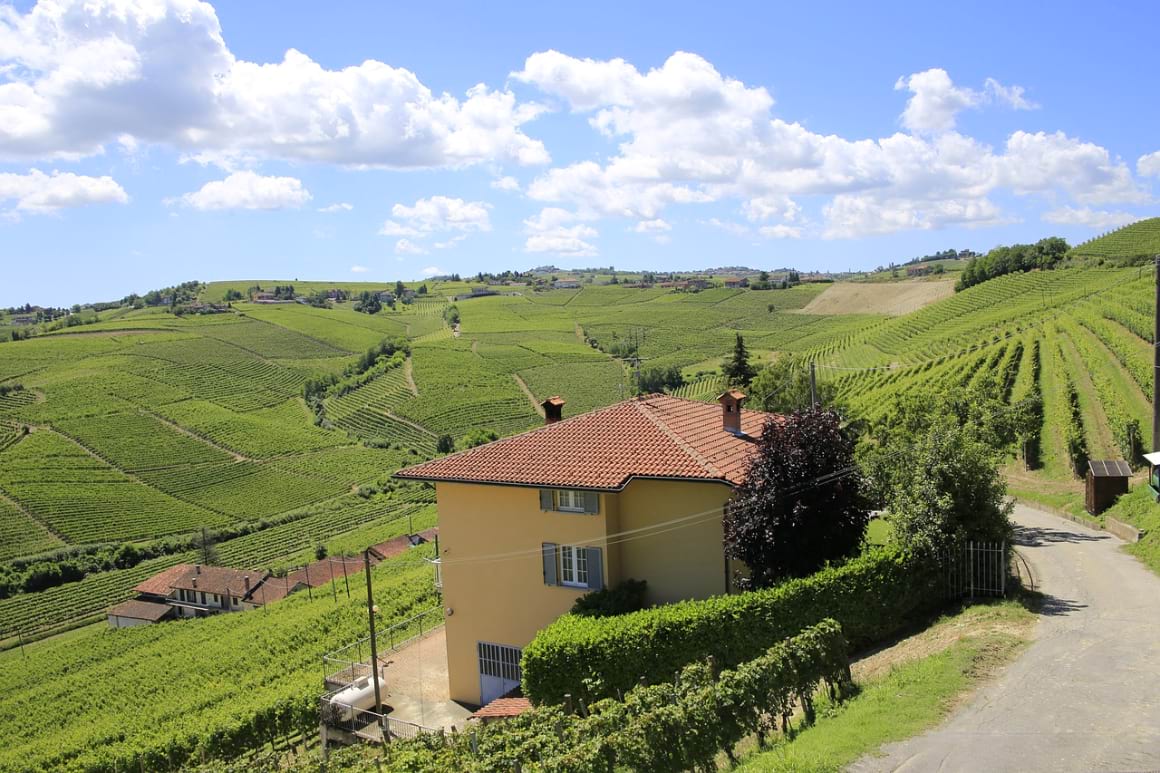
Located in northwest Italy, Piedmont is one of the most famous wine regions in Italy as well as the rest of the world. Piedmont holds the most DOCs and DOCGs out of all the Italian wine regions, challenged only by Veneto and Tuscany.
The wines from Barolo and Barbaresco are made using mainly the Nebbiolo grape – a varietal that is high in both tannin and acidity. The region has also become increasingly known for its sparkling and slightly sweet white wine known as Moscato d’Asti.
The name Piedmont translates to “foot mountain” and the region sits, well, at the foot of the mountain – the western Alps to be exact. The favourable climate that the region is exposed to along with modern wine-making techniques and practices has allowed Piedmont to be at the forefront of Italian wine production.
Aside from Nebbiolo, the other varietals that are used in the area include Barbera and Dolcetto. Interestingly enough, Barbera is the most widely-planted grape in the region and is often referred to as being the workhorse varietal.
Veneto
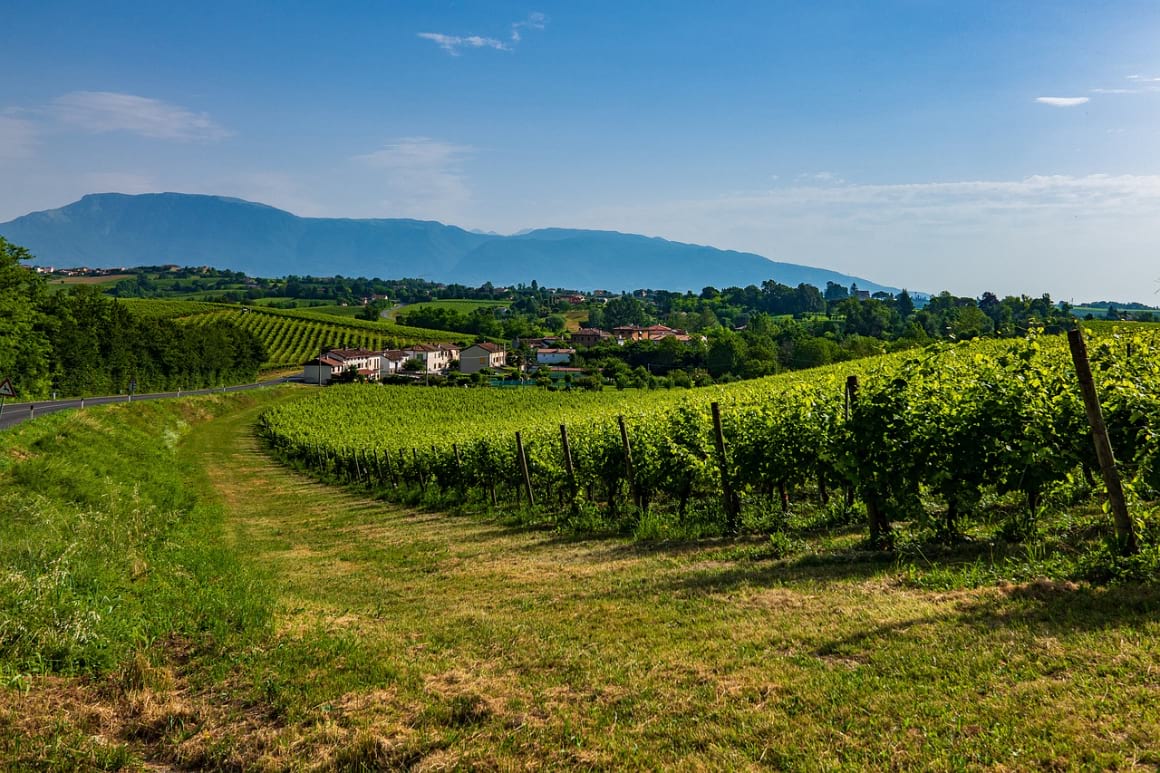
Veneto is located in the north-eastern stretches of Italy and it produces the most wine out of any region in the country. It goes to show that size isn’t everything as Veneto is smaller than regions like Piedmont, Sicily, Tuscany, Puglia, and Lombardy. The region is most famous for a number of different products including refreshing whites like Soave and Prosecco, the fruit-forward Valpolicella reds, and of course the intense Amarone.
The Veneto region can be divided up into three sub-areas: northwest, northeast, and central Veneto. Each of these three areas has its own unique climate and topography. The northwest Veneto experiences slightly cooler conditions and thus the alpine-influenced conditions are perfect for the production of crisp and fresh white wines.
The northeast Veneto is Prosecco country and the grape production occurs on either side of the Piave River. Lastly, the central Veneto produces some top-quality wines in the higher altitude areas and whites like Pinot Grigio and Tocai Friulano really flourish. There are also a number of international reds like Pinot Noir, Cabernet Sauvignon, Cabernet Franc, and Merlot that are grown here.
Umbria
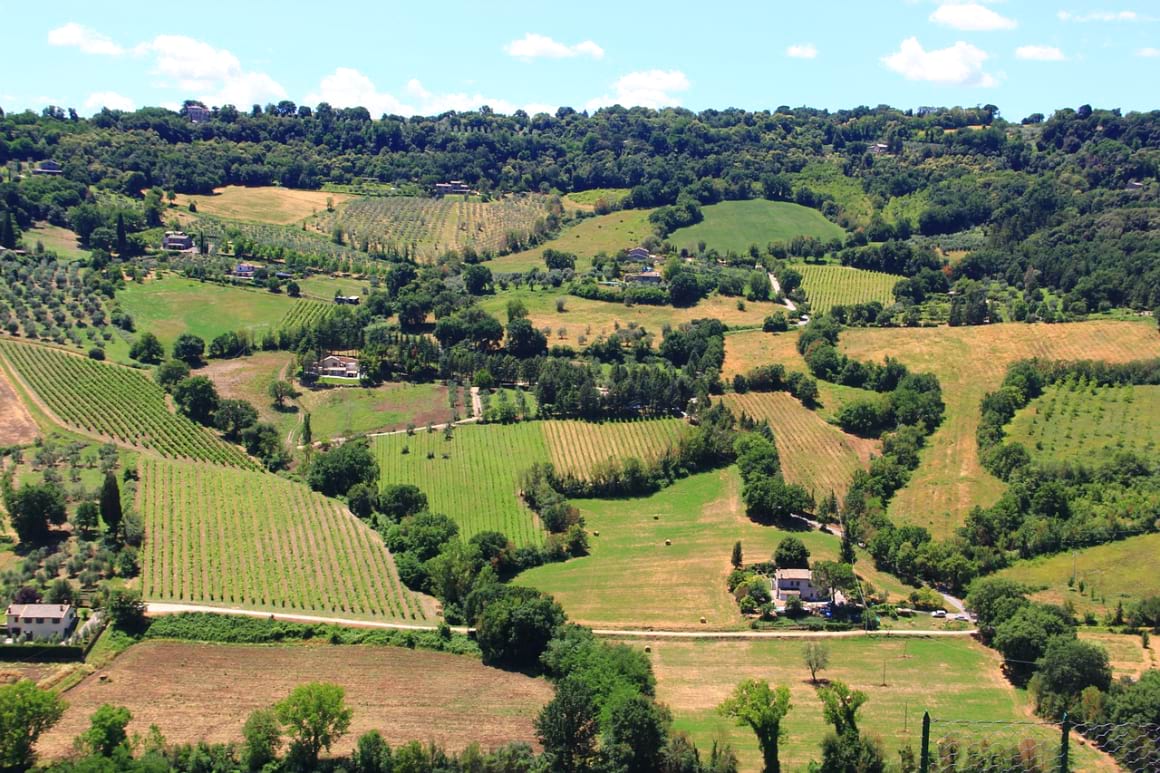
The Umbria region, almost bang in the middle of Italy, is characterized by its long, rolling hills of historic towns and, of course, vineyards. Umbria is a relatively small contributor to Italy’s DOC production, only contributing around 7% each year. The region is best known for white wine production, although it is also popular for the Sangiovese grape much like its neighboring region, Tuscany.
The Orvieto DOC is the largest in the region, with its white wines being comprised mainly of Trebianno. A varietal called Grechetto, which has similar characteristics to Pinot Grigio, is also largely used in the region. Another native varietal called Sagrantino is found in the Montefalco area and because of its power and depth, received DOCG status more than 30 years ago.
You can visit from Tuscany to Umbria and experience a Mediterranean-influenced climate with hot, dry summers and cold, rainy winters. The region is known for beautifully elegant and mineral-driven white wines that come to be thanks to day/night temperature fluctuations as a result of altitude.
Puglia
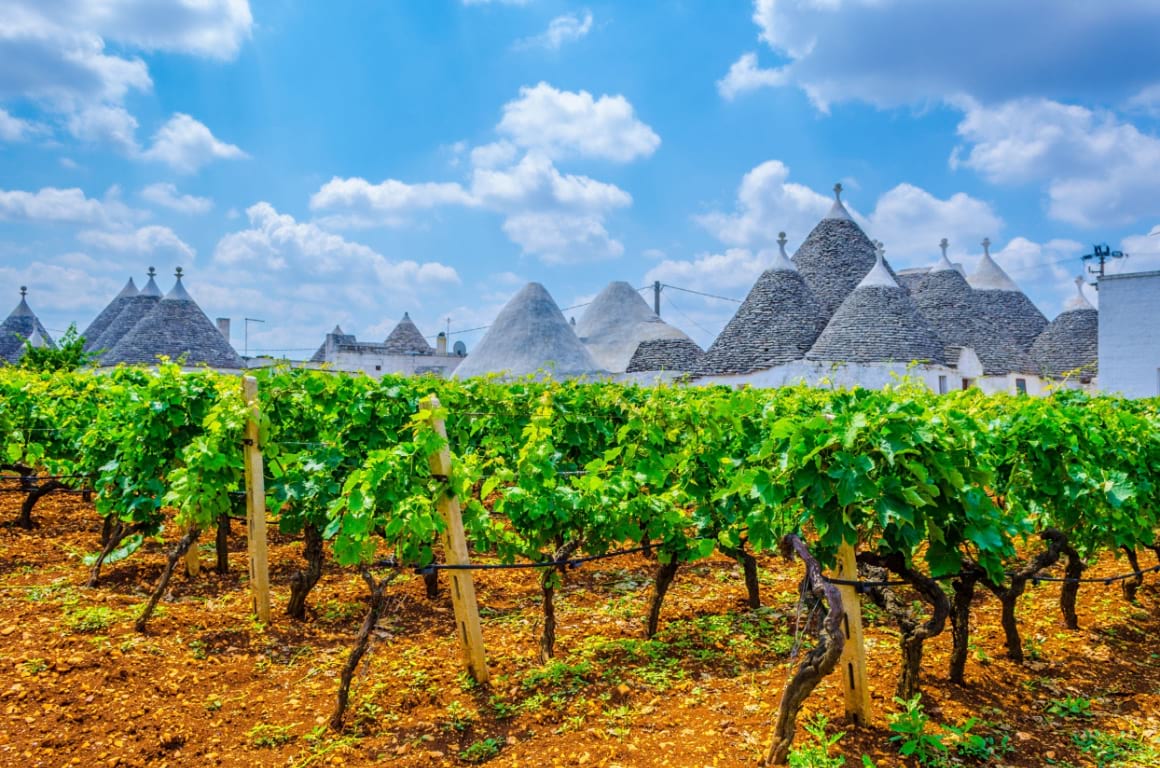
We now travel down to the far south-eastern corner of Italy to the Puglia region, another one of the smaller DOC producers. There are significantly large variances in the climate and topography of the northern and southern areas of the region as well as the wine-making techniques.
The north is more hill-dominated and follows in the footsteps of central Italian wine production techniques. The South on the other hand is mainly flat and their production techniques are inspired by their Greco-Roman ties.
An interesting fact about the region of Puglia is that grapes aren’t their biggest crop, olives are. Puglia is responsible for almost half of the total olive oil production in Italy! That being said, the region experiences what some refer to as almost perfect grape-growing conditions.
Tons of sunshine, cool sea breezes, and hot conditions together with iron-rich quaternary and limestone soils make for these ideal conditions. Varietals like Primitivo, Negroamaro, Sangiovese and Trebianno thrive in Puglia.
Lombardy
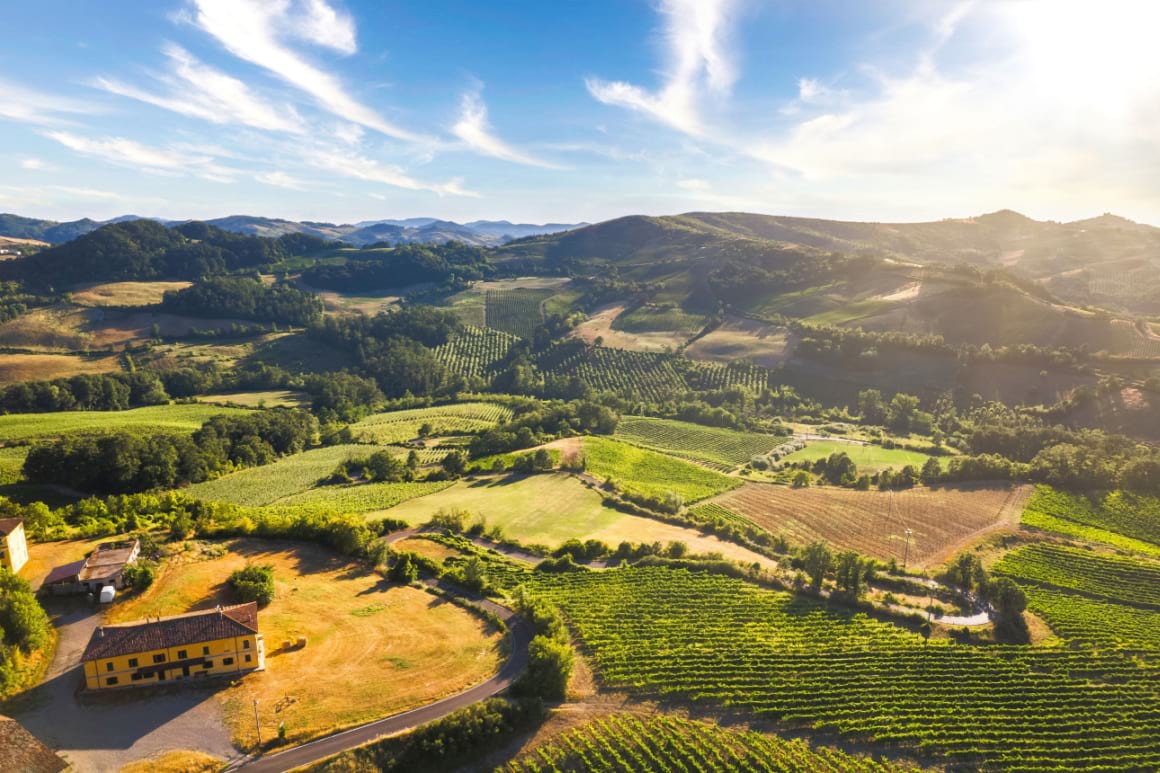
Located in the central north of Italy, Lombardy is responsible for around 7% of the total DOC production in the country. The region is completely landlocked and surrounded by the other formidable wine regions of Piedmont, Veneto, and Emilia-Romagna as well as the southern Alps.
While there is no ocean influence on Lombardy, the large lakes in the region (Como, Maggiore, Garda, and Iseo) have a somewhat similar cooling effect.
Given the location of Lombardy between the Alps and the Po Basin, the region experiences a variety of mesoclimates. The higher-altitude vineyards experience hot days but cool nights, whereas the lower, hilly plains have much more constant temperatures and humidity.
Lombardy is famous for a number of different wines including the Oltrepo Pavese Metodo Classico DOCG – one of two sparkling wines from the region. The other is Franciacort, generally made from Piot Blanc, Pinot Noir, and Chardonnay grapes. Pinot Gris and Pinot Noir are also produced in Lombardy (the latter being referred to as Pinot Nero).
Finally, red wines are produced from Nebbiolo which is known as Chiavennasca. This is a lighter style compared to those in Piedmont.
Emilia-Romagna
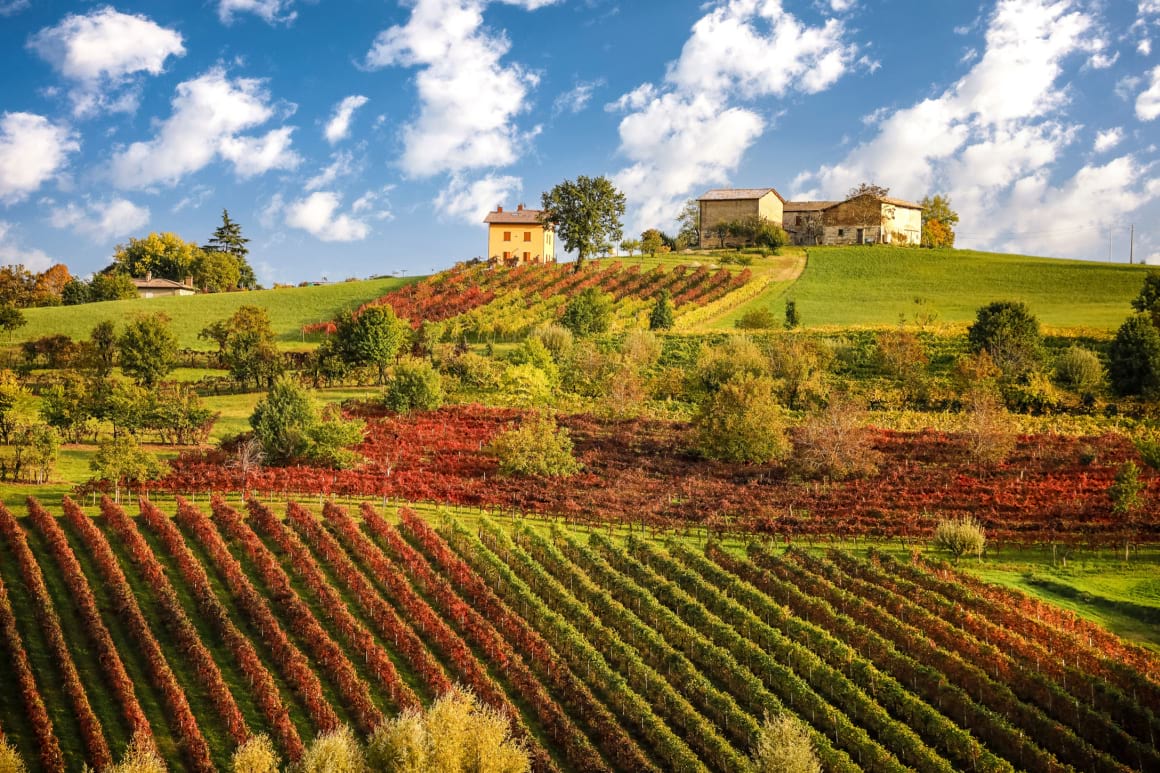
Last, but certainly not least, is Emilia-Romagna, located in northern Italy around the city of Bologna. Stay in Bologna and enjoy the area, there’s lots to see and do! Emilia-Romagna benefits from some of the most fertile soils in the entire country and is unique in that it has both a west and an east coast.
The most notable wines from the region are Lambrusco and Pignoletto, with the former having five notable DOCs, namely Modena, Reggiano, di Sorbara, Salamino di Santa Croce, and Grasparossa di Castelvetra.
Emilia-Romagna has a rather diverse terroir, ranging from Alpine peaks and hills to low-lying and coastal plains. This diversity in terroir leads to a large variety of wine styles being produced and also allows for the planting of diverse varietals. The split between white and red wine production is roughly equal and you can expect varietals such as Lambrusco and Malvasia as the predominant plantings.
Aside from these, Sangiovese, Trebbiano, Barbera, and Bonarda are planted along with international varietals like Cabernet Sauvignon, Chardonnay, and Pinot Blanc.

We’ve tested countless backpacks over the years, but there’s one that has always been the best and remains the best buy for adventurers: the broke backpacker-approved Osprey Aether and Ariel series.
Want more deetz on why these packs are so damn perfect? Then read our comprehensive review for the inside scoop!
View on OspreyThe Best Italy Winery Tours
Now, Italy has no less than 20 wine regions in the country, with vineyards literally covering every hilltop and plain. This means a holy shit ton of wineries; some reports go so far as to say that there are more than 310,000 wineries in Italy! With so many wineries and places to visit in Italy, how does one possibly go about choosing?
Well, firstly, not all vineyards offer tours and tastings. That already rules out a large number.
Secondly, (that’s where I come in) to help narrow it down through extensive research and first-hand experiences. So, with that, I present to you the best winery tours in Italy for each region above. Let’s go!
Sicily Wine Tour
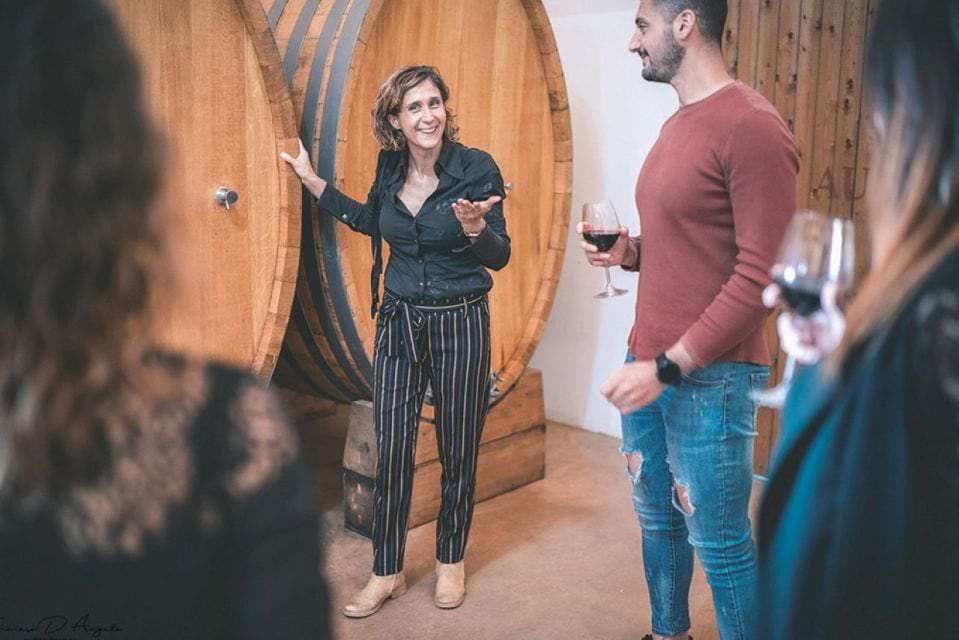
- Partinico
- 2 hours
- $44
This is the perfect express tour for those who are pressed for time. Although it’s only two hours long, you fit in lots of activities!
You will be immersed in the Palmero countryside and begin the tour by walking through the vineyards as well as olive and citrus orchards. This hidden gem in Italy gives you a sense of the terroir and place of the wines.
Next up, discover the traditional cellar known as a Sicilian Baglio – where the real magic happens (there’s an innuendo in there somewhere). Here, you will learn about the wine-making practices and tour through the production and bottling plant, after which you will taste wines from the tanks and barrels in the cellar. The tour concludes with a brunch of some local Sicilian appetizers, and of course, some delicious wines.
Tuscany Wine Tour
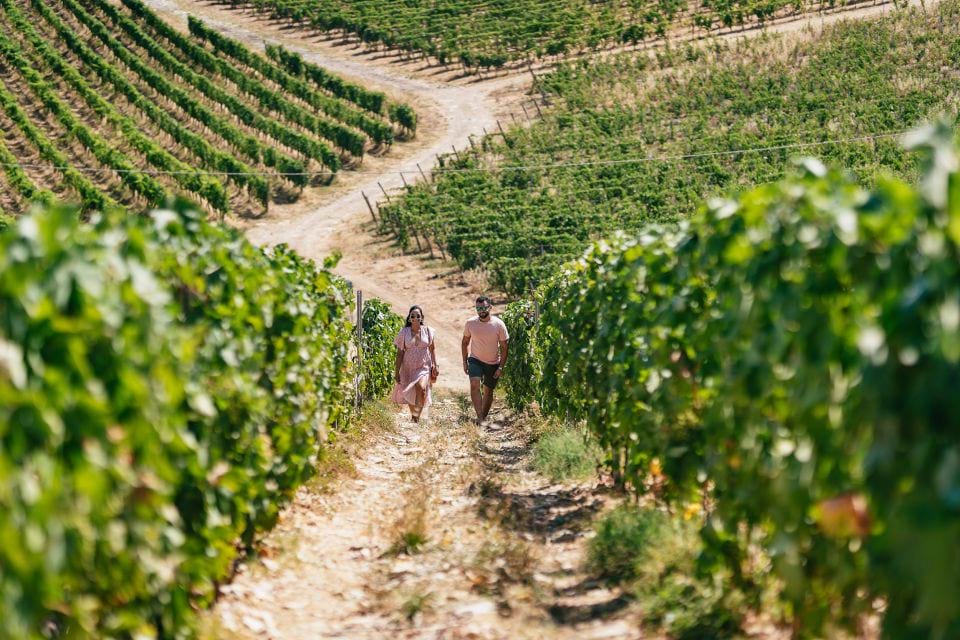
- Florence
- 4.5 hours
- $97
What better way to start your winery tour in Tuscany than a visit to the Chianti Clasico region? You will visit on a day trip from Florence through the picturesque rolling hills of the Tuscan countryside and visit two local wineries. At the first winery, you learn about their production techniques and sample a few of their wines as well as their olive oil made on-site.
You will then be driven to the second winery and learn about their production techniques which are rather different to the first estate. Again, you get to sample a few wines and olive oils, as well as some local snacks. Think local charcuterie, cheese, bruschetta – nothing better to accompany those delicious wines under the Tuscan sun.
Piedmont Wine Tour
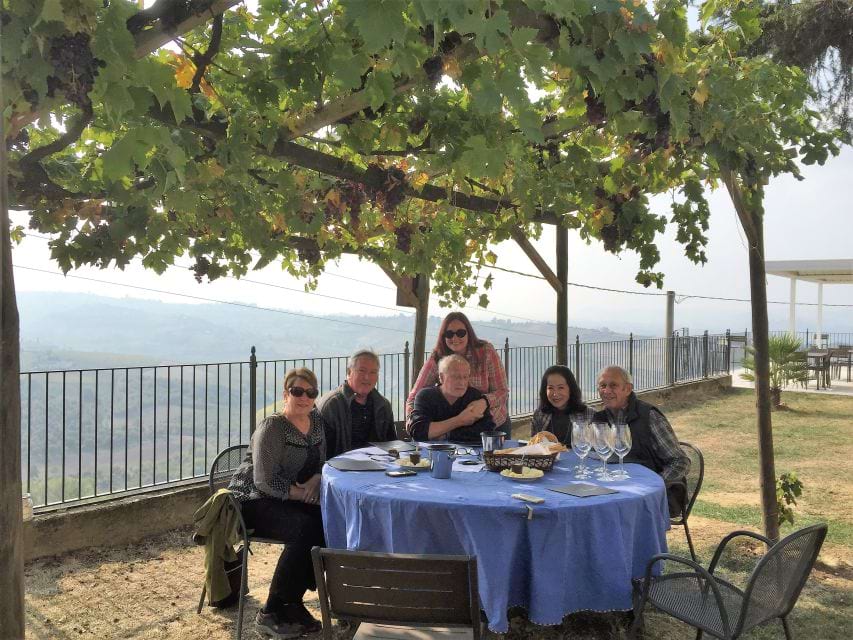
- Alba and Guarene
- 8 hours
- $250
Now we’re whipping out the big guns – a vineyard tour to the world-famous Barolo wine route. The tour starts off with a journey through the Piedmont region where you will drive past vineyards and through quiet little villages to the first stop.
A somewhat off-the-beaten-track winery where you will get to sample the regional, Nebbiolo-driven speciality. Thereafter, you will have some time to explore the village on your own and do a spot of shopping if you will.
The second stop of the day is at another winery specialising in Barbaresco that produces its own unique wines on-site. You will then head to the third stop for the day in the Langhe Hills area in a family-run winery.
The winemaker will guide you through their wine-making techniques as well as through their wines. There will then be some free time again to wander, shop, and have a bite to eat before heading back to the starting point.
Veneto Wine Tour
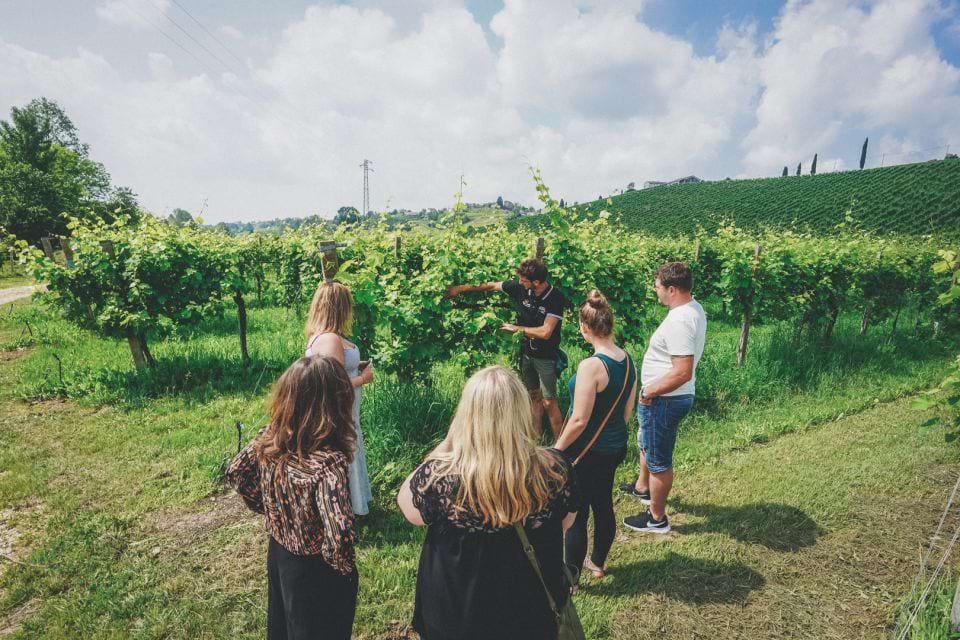
- Venice
- 6 hours
- $173
Did someone say Prosecco? This tour starts in the centre of Venice and then proceeds to head out into the countryside, passing vineyards and small towns. Conegliano Valdobbiadene was the original region of Prosecco and the perfect starting point of the real reason we’re here – to taste wines!
The first estate is a family-run winery where you will learn about their estate, taste their wines, and have a light lunch to accompany the wines. After you’ve warmed up with some delicious wines and cheeses, meats, seasonal vegetables, and some warm bread to match, of course, you will head over to the second estate. Again, you will learn about their production techniques as well as more on the Charmat method of production.
You will be guided through another tasting with the winemaker and learn about their products. It’s then home time, unfortunately, and another picturesque drive back through the region and into Venice.
Umbria Wine Tour
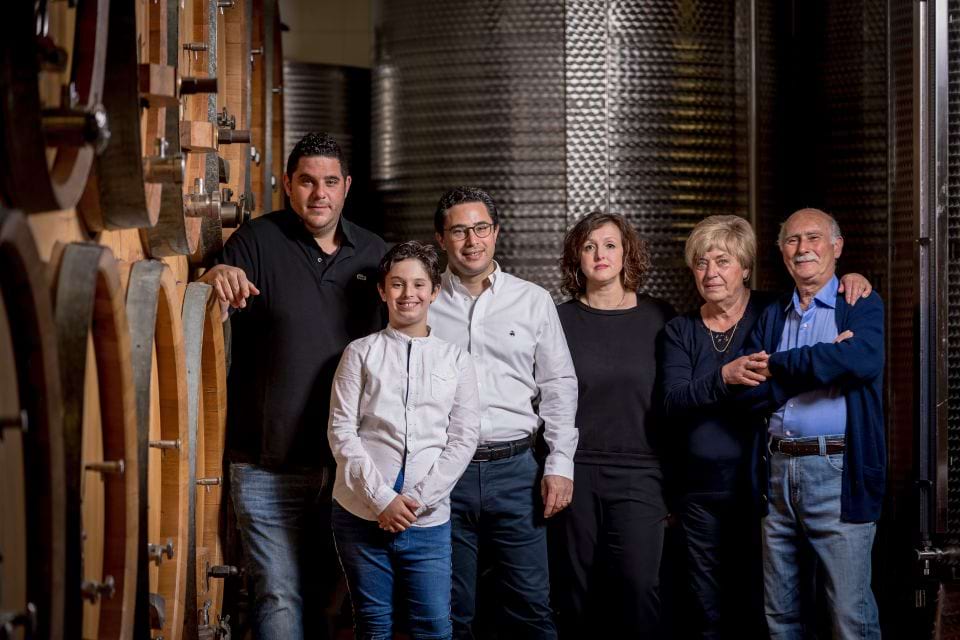
- Montefalco
- 1.5 hours
- $20
This is the ideal morning winery tour that doesn’t involve a lot of driving and is the perfect “express tasting”, if you will. The Bocale Winery is a family-owned business and during the tour, you will learn all about their wine-making practices. From the vineyards and the winery to the production techniques and ageing of the wines, you’ll get a full insight into it all.
The main part of the tour is the tasting of the best Rosso di Montefalco wines you’ve ever come across. You will get to try a total of three wines – Montefalco Sagrantino, Trebbiano Spoletino, and Montefalco Rosso, along with some local produce, olive oil, and bruschetta.
Puglia Wine Tour
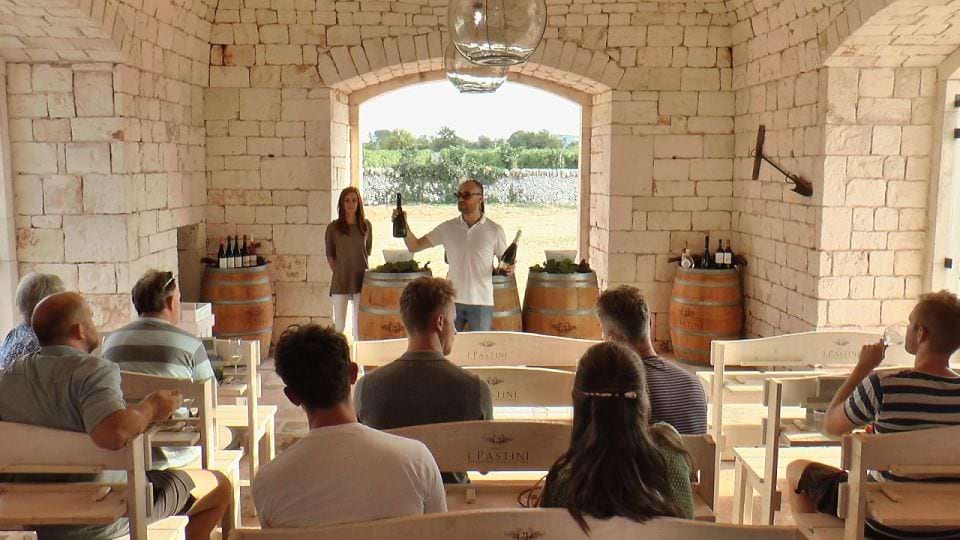
- Martina Franca
- 1.5 hours
- $54
What better way to experience the Apulia region than with a vineyard visit in the town of Martina Franca? It is slightly less touristy and the perfect place to discover some wines of the region. On this tour, you will head to one of the oldest wineries in Puglia in the Itria Valley and learn much about the wine-making history of the region.
Not only will you taste some amazing wines, but you get to sample some of the local delicacies too. The tasting takes place in a stone-walled building that is open to the elements and a stone’s throw from the vineyards.
You will learn about the production techniques of the winery, the wines, and the vineyards from which they are produced. It really is an amazingly authentic experience and the best part is that you’ll still have many hours left in the day for exploring!
Lombardy Wine Tour
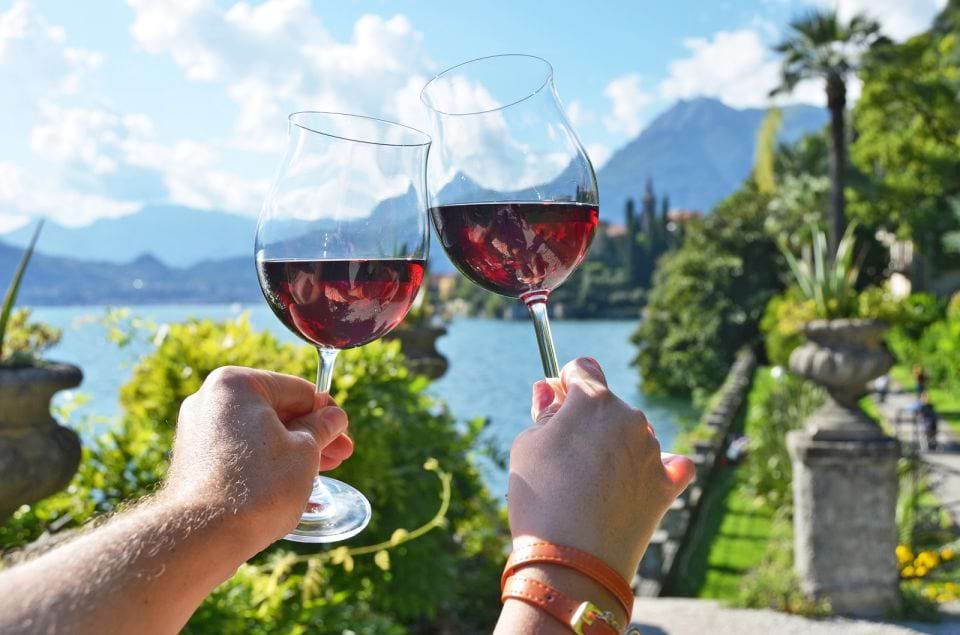
- Lake Como
- 1.5 hours
- $39
You’ve heard of iconic venues. Staying in Lake Como to discover some of the region’s finest wines is pretty bloody iconic if you ask me. This express vineyard tour in Lombardy is the perfect morning or afternoon activity for those who have an action-packed day but still wish to taste some wines.
You will visit a winery in Domaso and learn about their production techniques, cellaring, and ageing, followed by a tour of the lake-view vineyards. Then it’s onto the fun part – getting to taste through three wines from the winery.
Now, it’s not just a simple tasting of three wines: there’s a fun little paring involved in the tasting. There are two red wines and one white wine in the tasting that are each matched with a food item. The white is first, paired with some cheese, a wild apple jam, and some fresh pears.
The first red is a rather unique pairing and is accompanied by extra virgin olive oil. The final pairing is the second red which is accompanied by salami and seasoned cheese.
Emilia-Romagna Wine Tour
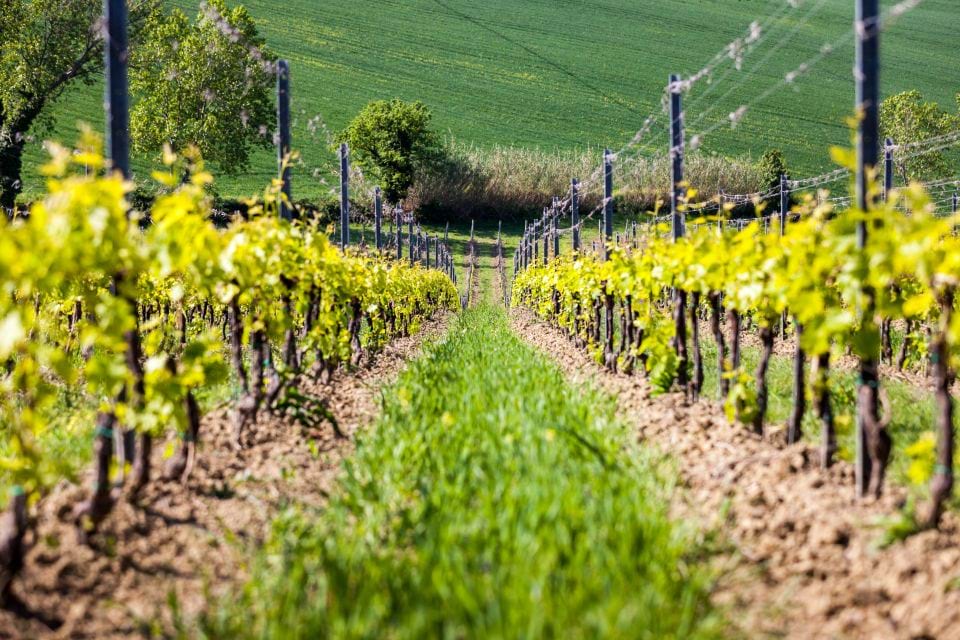
- Rimini
- 1.5 hours
- $24
Rounding off the list is a fantastic vineyard and winery tour in Emilia-Romagna where you get to explore Azienda Agricola San Valentino in Rimini. This illuminating tour is comprised of a visit to the vineyards to learn about the various grape varietals grown on the estate. You will learn all about the history of the region, dating back to the Middle Ages to the modern society.
From the vineyards, you will head into the barrel cellar to take in the ageing red wines, not before a meander through the olive orchards. The tour concludes with a tasting of three of the wines from the estate – Scabi Sangiovese Superiore Doc Bio, Cabi Rebola Doc, and Conte di Covignano Sangiovese Riserva Doc Bio.
The wines are also accompanied by some local cold meat cuts as well as bread and olive oil.
Worry Less With Good Insurance
Before you go anywhere, the best idea is to get solid travel insurance. So if (and potentially, when) things go wrong, you’re still on course for happy travels.
ALWAYS sort out your backpacker insurance before your trip. There’s plenty to choose from in that department, but a good place to start is Safety Wing.
They offer month-to-month payments, no lock-in contracts, and require absolutely no itineraries: that’s the exact kind of insurance long-term travellers and digital nomads need.
SafetyWing is cheap, easy, and admin-free: just sign up lickety-split so you can get back to it!
Click the button below to learn more about SafetyWing’s setup or read our insider review for the full tasty scoop.
Final Thoughts on Italy Wine Tours
Right, there you have it – the best Italy winery tours to visit right now! I hope this guide comes in useful to embark on your next wine tourism adventure.
I know after I visited winery tours in France, Italy just had to be the next stop! Whether you’re a seasoned veteran in the wine world or just getting started on your wine journey, everyone is welcome on vineyard tours in Italy.
Not only will you learn of some of the most influential Italian wine regions, but you will also not feel as overwhelmed when trying to pick a vineyard tour in the country. So, all that’s left to do now is get booked on that flight, secure your accommodation, and sign up for that tour!
Cin Cin! Alla nostra salute!
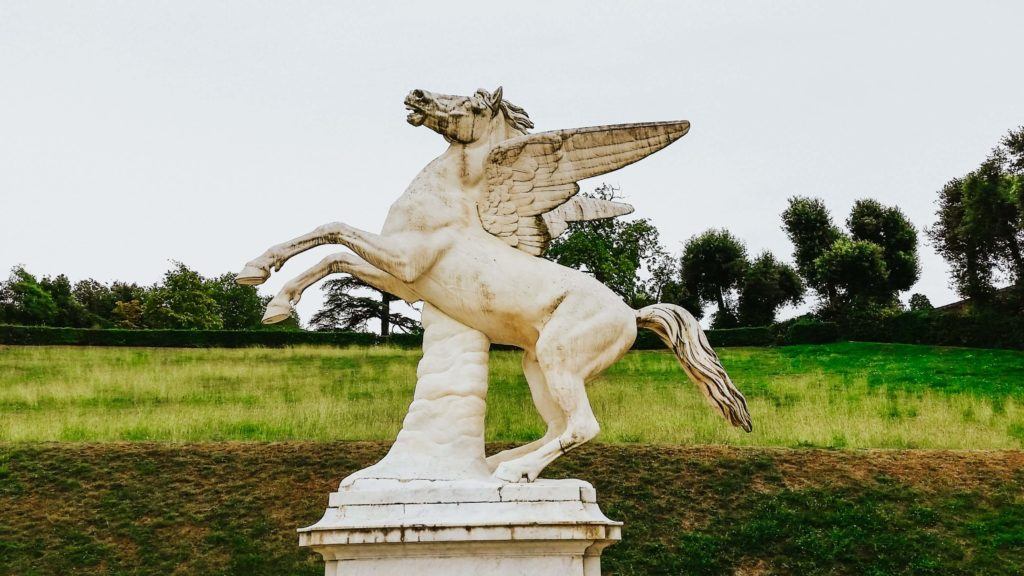
Buy Us a Coffee!
A couple of you lovely readers suggested we set up a tip jar for direct support as an alternative to booking through our links, since we’ve decided to keep the site ad-free. So here it is!
You can now buy The Broke Backpacker a coffee. If you like and use our content to plan your trips, it’s a much appreciated way to show appreciation 🙂










